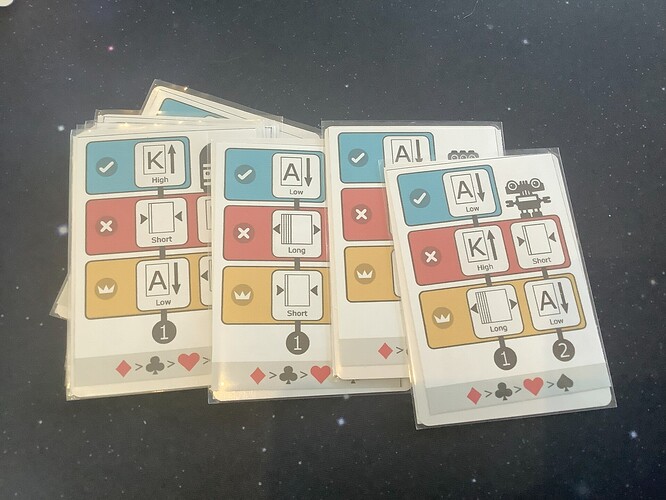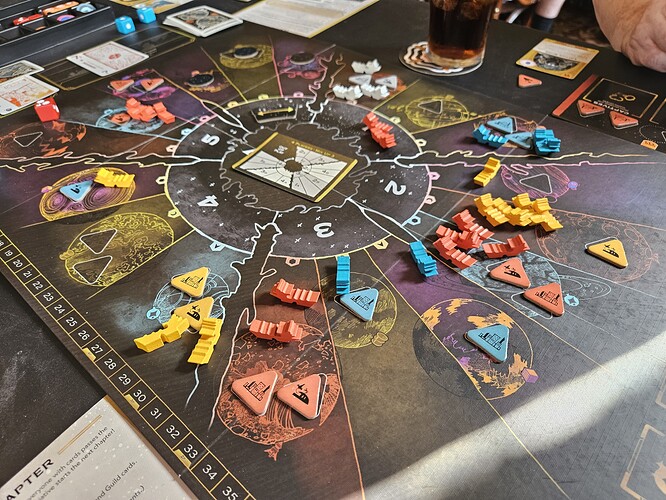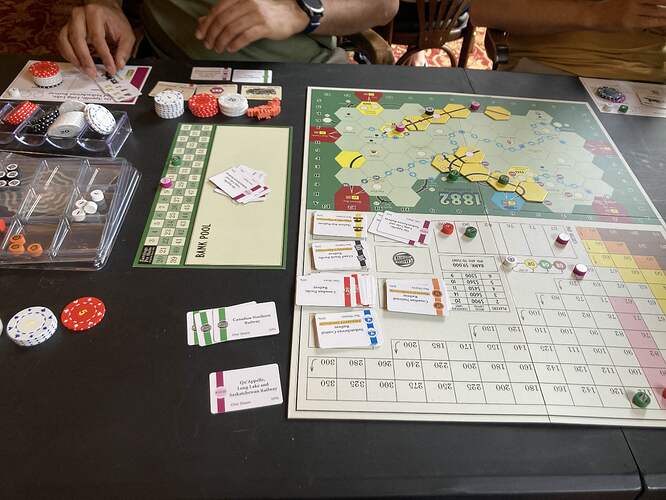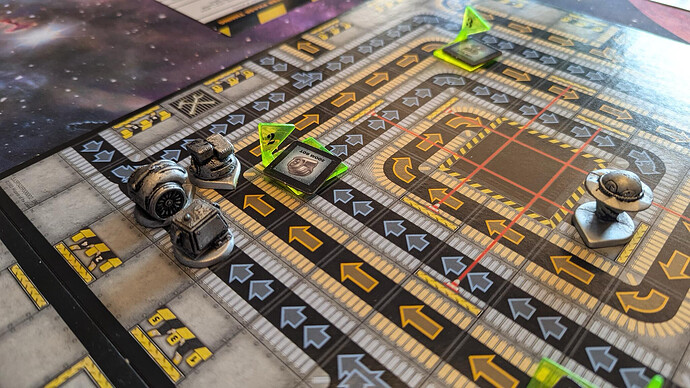Agents of SMERSH, a slightly random cooperative spy based game. You travel around the world, having encounters with bad guys, collecting intel and upgrading your skills. There’s a round tracker, which shows you how many rounds until you meet with the nefarious Dr Lobo. But before that, you must face off against his evil henchman. Actually, you don’t need to fight the henchman first, but it does help you in the boss fight. Normal fights have you looking up an entry in the (huge) book, which tells you what happens to the agent, according to their response and a random die roll. It will also tell you which of your basic skills are required to succeed at the encounter. When you fight the henchman or Dr Lobo, you will need to battle your way through a few encounters from the Epic Showdown book. We managed to defeat Dr Lobo, using up all our resolve (resolve is used to turn a certain face from a die into a success). It’s all a bit random, but good fun.
Courtisans, first play. Pretty simple, you get three cards in your hand, and have to play one to the central display, one to yourself, and one in an opponents area. Cards in the central display are played as positive (above the line) or negative (below). At the end of the game, cards in your area score according to the overall points from the central display. There are four special types of card – a spy who is placed face down so you don’t know which family it belongs to, a noble who counts as two cards, an assassin who removes another card, and a guard, who cannot be killed. At the end of the game spies are revealed, showing their family. You also get two objective cards with various conditions. My objective cards were to have less of a family type than my left neighbour, and also have a least one card from each family on the negative side. The final scores were very close, 16 -15-15 (I was 15). Very quick to play, good fun.
Uchronicle, first play. This is yet another trick taking game that I proxied. The twist is that you have to be winning the trick when you play a card. But also you need to adjust any previous tricks according to the current rules. In the basic game you can change the trump suit, and also whether lower or higher cards win. So, say player 1 played a blue one, and the next player went blue six, so they need to change the rule that says higher numbers are used. All good, six is obviously higher than one. The next player can’t go any higher (because six is the highest). So they play a red card, and change the rule so that red is the trump. So that trick stays on the table, and we move onto the next trick. The first player plays a red five, remembering that red is still the trump. The second player plays the red six, the only card that can follow according to the rules. The third player can’t play any higher, so they play a blue five and change the rules so that blue is the trump suit. This is fine, they are winning the current trick, but the twist is that every previous trick has to be consistent, and it’s not – the red is no longer the trump suit, so it can’t be winning in the first trick. So, the last player has to make adjustments to the previous trick(s) so that the rules work. They can specify a suit or a number, and turn all of those cards over (they count as negative points). Previous tricks can be left with a single card, or even no cards at all. To be honest, I couldn’t follow this game from the manual, but there was a video on BGG which very clearly explained everything. Thank god for BGG!
Robotrick, first play. Another game I proxied, using a very helpful file from BGG that lets you use a standard deck of cards. It’s a three player game with an AI player that uses a card of rules to make their selection. An AI card has three situations - when the AI can follow, when they can’t follow, and if they lead. If the AI player (we called him Bruce) wins a trick, then everyone takes back their card as negative points. Cards are worth their face value, Jack and Queen are worth 10 points, and the King is 15. If a player wins, they take the card the AI played as positive points. But you can only take three positive cards, after that they all count as negative. My first round had me at negative 29 points…A very clever game, want to play this again!







